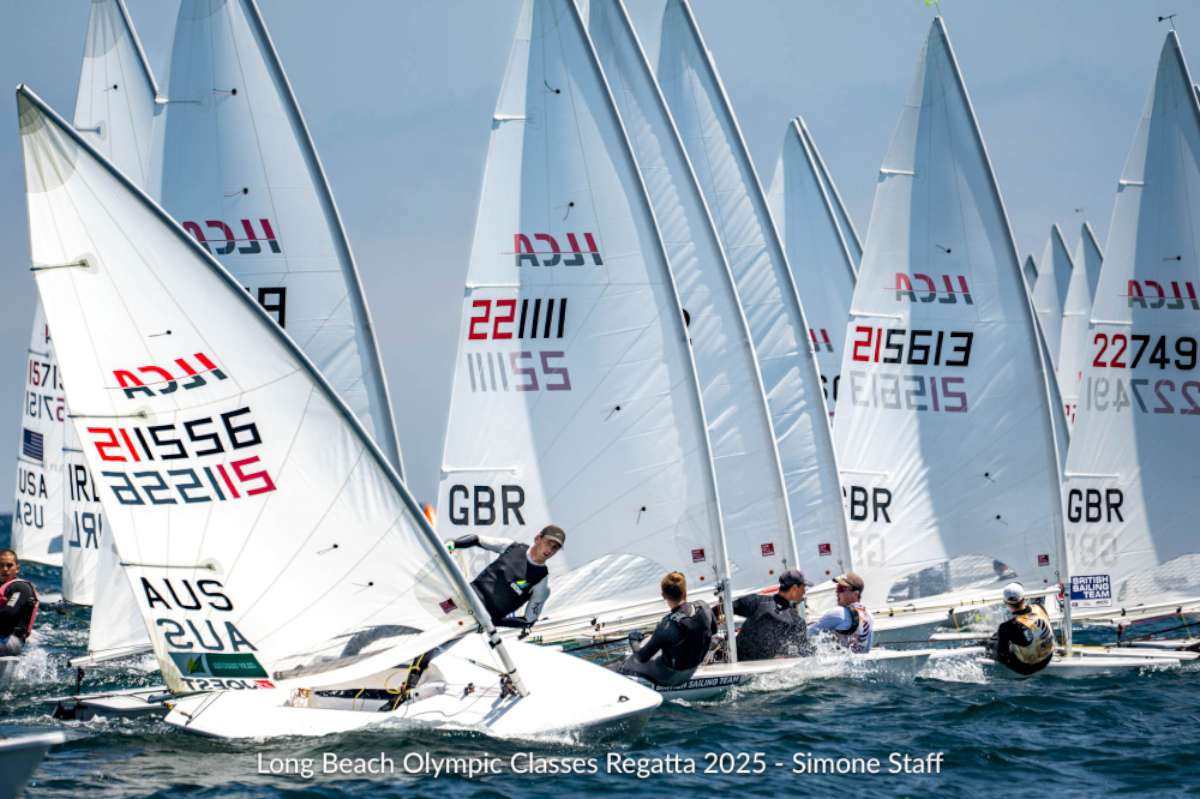Regardless of where you live you can expect to be hit with severe weather once in a while. Whether it is some wilder winds hitting the region or a destructive cyclone, preparing your yacht properly can ensure your insurance agent will compensate.
Let’s take a look at a previous disaster and what was was learned.
CYCLONE DEBBIE
In 2017, Cyclone Debbie hit the north coast of Australia and left significant amounts of damage. Boaties particularly felt the effects of the storm with vessels, marinas and waters all impacted.
The Pantaenius team were amongst the first insurance representatives to see the affected areas, travelling up to Airlie and Hamilton Island, where Debbie hit the hardest. In short, Cyclone Debbie’s aftermath was significant.
The team was confronted with a lot. Many things were quite shocking to see, but what was, sadly, most evident was how little preparation some clients had done. With the knowledge of Debbie’s presence and movement five days prior to her arrival, the insurance agency had expected much more effort to protect assets.
Many used the excuse of living in the southern states or that they simply “did not know”, both invalid excuses as far as proper yacht ownership practices would dictate. There were plenty of people on the ground that could prepare your boat if they could not.
At the end of the day, there is a responsibility that lies squarely with every boat owner, the insured yacht owner. Your insurer is in partnership with you, so in reality, would you expect a partner to remain beside you if you were negligent?
The notion that insurance will take care of it all is not entirely correct. In any partnership, you do have responsibilities. They stem from basic seamanship, and are referred to in most marine public disclosure statements.
Since that time, Pantaenius have had the chance to check in with a few affected clients, some of which noted that they were still completing repairs and replacements over a year later due to the huge waiting lists for slipping at the local and affected marinas.
PREPARING FOR STORM SEASON
There is plenty of reading material out there about how to prepare for these events because, at the end of the day, they are not exactly uncommon. There is some simple, basic procedures to follow that could ensure possible damage is minimised and assist your insurer and your claim.
Double up on all lines is top of the list. Use extra line to double up the spring and bow lines. Make sure the lines are in good condition and are of appropriate size.
Position slip lines so that they reach higher up on the pilings. This aids in keeping the boat in place when the weather hits and the storm surge water level rises.
Remove all sails and remove all sail covers, dodgers, enclosures, biminis from the deck. Do not leave any canvas products on your vessel, even if furled and wrapped.
Remove any windage that could cause the boat to ‘sail’ during nasty winds. This even includes well-tied down dinghies.
If you have a hard dinghy then take it home with you or pull the boat plug and let it sink it in shallow water to shield it from potential damage. Dinghy’s must never be left on davits.
Put out extra horizontal fenders onto pilings and around the hull where contact can be expected. If moored stern first then hang vertical fenders across the stern. Extra vertical fenders should also be hung on the side next to finger piers.
Make sure fenders are of suitable size and are in good condition. Damaged fenders are of no value as they will quickly be of no use.
Add chafing gear around synthetic docking line. These lines have elasticity that allows it to spring back and forth when under pressure; this action, combined with the presence of sharp chocks can see an anchor or dock line completely cut through.
To avoid this, use sandpaper or a file to smooth the edges of chocks. Furthermore, use rags, canvas, split hose or PVC tubing where it passes over a rub rail/toe rail or through a chock.
Shut off all seacocks by turning the handle perpendicular (across the flow) to the hose, this includes the head intake, sink and shower drain, engine raw water intake and head overboard discharge seacocks.
The exclusion to this are the cockpit drain seacocks, which drain rain water.
Batten down and tape all hatches and opening ports. Tape around the inside edges for extra protection against water intrusion.
Shut down and, if possible, disconnect all the electronic equipment; this will save the electronics in the event of a lightning strike, which is not uncommon with tropical storms. Make sure, however, the bilge pumps still work and ensure its batteries are fully charged to run the pumps. Test the float switch on each bilge pump by lifting the float switch tab, which should case the pump to start within a few seconds.
If anchoring in mangroves or deep creek, use as many anchors and lines attached to the onshore trees as possible. Make sure all lines are of suitable size and are in good condition.
Following these guidelines can really reduce the impact wild weather can have on your boat and, therefore, your wallet. Furthermore, it will minimise the potential damage to the property of others.
Overall, these simple but effective approaches to securing your vessel can truly make a difference in its preservation, while also helping you comply with the agreement you have with your insurer.
With the arrival of spring or autumn, we all know that stormy times are ahead, and this represents an obvious risk for sailing enthusiasts. Whether at sea, in the harbour or on land – the right preparation is essential to ensure that vessel and crew can survive a storm with minimum damage.
It is often the little things that make all the difference. An extra fender here, another stern line there, keeping a regular eye on the shipping forecast or checking your equipment beforehand as a precaution. Nonetheless, storm damage occurs again and again due to lack of adequate preparation and seamanship.
Storm coming
At first, it may sound a little paradoxical: in the event of a storm, it is sometimes better to be on the high seas rather than close to the shore.
This is because the nearer you get to the land, the shallower the water. In shallower waters, short, steep waves can build up, which not only put the vessel under considerable strain but can also rapidly wear down the crew.
Thus, if you cannot get to a sheltered harbour, it may be better to weather the storm away from the shore. In Mediterranean marinas, for example, the yachts are densely packed together in summer ‘Med mooring’ style perpendicular to the pier or with bow anchors and stern lines. Any swell that builds up during a storm will often result in considerable damage.
No question about it though, if you are in a marina, your vessel should be safely and securely moored, whatever the weather conditions.
Forward and aft springs, together with bow and stern lines, hold the yacht in position. Elastic rope with a high breaking load can absorb any jolting motion, while fenders on the hull and stern protect against contact with the pier or neighbouring vessels.
But when a storm approaches, additional measures must be taken. Check all mooring lines for any signs of wear or chafing; replace any damaged lines. Make sure you have additional lines and fenders, which can be used for rapidly securing the vessel in an emergency.
Importantly, where possible, moor your vessel in such a way that wind, waves and current will push your boat away from the quay and not onto it.
Preparing for cruising
Another important factor is thorough, responsible planning and preparation for trips. This must include providing a detailed briefing to the crew.
The owner should insist on the crew being given a detailed briefing, so that even in heavy weather all crew members know exactly what to do: how do the valves work; where are the emergency cutters; what do the storm sails look like?
Once the storm has arrived, it is too late to do this.
Apart from the hurricane areas in the Caribbean and the tropical cyclone areas in S.E. Asia, Pantaenius does not have a specific catalogue of requirements that you need to observe during heavy weather. It is expected that every sailing enthusiast should display common sense and good seamanship.
As the saying goes: always behave in the way you would advise your loved ones to behave.
Listening to the shipping forecast on a regular basis, avoiding the lee shore during storms, reefing in good time and adjusting your speed to the circumstances: these are just a few points that should be self-evident.
At a glance:
- regularly consult and check the shipping forecast
- find a suitable mooring or anchoring place and secure the vessel with additional lines
- regularly inspect and test safety-relevant equipment, e.g. storm sails,bilge pumps
- make sure all crew have been briefed on equipment and behaviour in the event of an emergency.
Tropical Storm Clause
Pantaenius played a decisive role in developing the ‘Named Tropical Storm Clause’ after Hurricane Ivan had raged so severely over Grenada in 2004.
The clause specifies the measures to be taken when a hurricane is announced by the National Hurricane Centre in Florida (www.nhc.noaa.gov). The Named Tropical Storm Clause, which has now become the guiding principle for many insurers, has helped to significantly reduce losses from hurricane damage. Since the entry into force of the clause, owners have paid much greater attention to preventive measures, in order not to lose their insurance cover.
≈


























